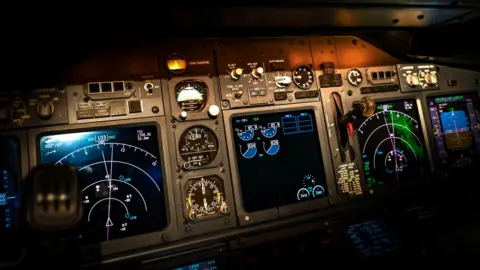The Jeju Air Flight 2216 crash at Muan International Airport, South Korea, in December 2024, remains under investigation, revealing alarming insights into the final moments before the accident, which claimed 179 lives. According to initial findings, the aircraft apparently suffered a bird strike that affected both engines shortly before the emergency landing. Reportedly, minutes before the plane crash-landed, the pilots made the fateful decision to shut down the engine that had sustained less damage, leaving the aircraft powered only by its compromised engine, which later caught fire.
The resulting power loss was likely detrimental. Investigators indicated that this maneuver eliminated the main source of thrust, drastically hindering the pilots’ capability to perform a successful landing. Faced with this critical failure, the aircraft descended without its landing gear deployed, ultimately skidding across the runway, crashing into a concrete wall, and igniting upon impact.
Expert opinions following the incident highlight increasing concerns over the pilots' judgment during this high-pressure situation. They speculate that misidentifying the engine that needed to be shut down may have contributed significantly to the tragedy. While the precise reasons for the decision remain uncertain, U.S. aviation specialists caution against reaching definitive conclusions without a complete understanding of the cockpit conditions at the time of the emergency.
Two flight attendants miraculously survived the crash, although every passenger and other crew member onboard perished. A report on the incident was presented to the victims' families, igniting further scrutiny into the actions and decision-making processes of the flight crew during this disastrous event.
The resulting power loss was likely detrimental. Investigators indicated that this maneuver eliminated the main source of thrust, drastically hindering the pilots’ capability to perform a successful landing. Faced with this critical failure, the aircraft descended without its landing gear deployed, ultimately skidding across the runway, crashing into a concrete wall, and igniting upon impact.
Expert opinions following the incident highlight increasing concerns over the pilots' judgment during this high-pressure situation. They speculate that misidentifying the engine that needed to be shut down may have contributed significantly to the tragedy. While the precise reasons for the decision remain uncertain, U.S. aviation specialists caution against reaching definitive conclusions without a complete understanding of the cockpit conditions at the time of the emergency.
Two flight attendants miraculously survived the crash, although every passenger and other crew member onboard perished. A report on the incident was presented to the victims' families, igniting further scrutiny into the actions and decision-making processes of the flight crew during this disastrous event.






















